Color variations observed even with supplementation of high amounts of astaxanthin
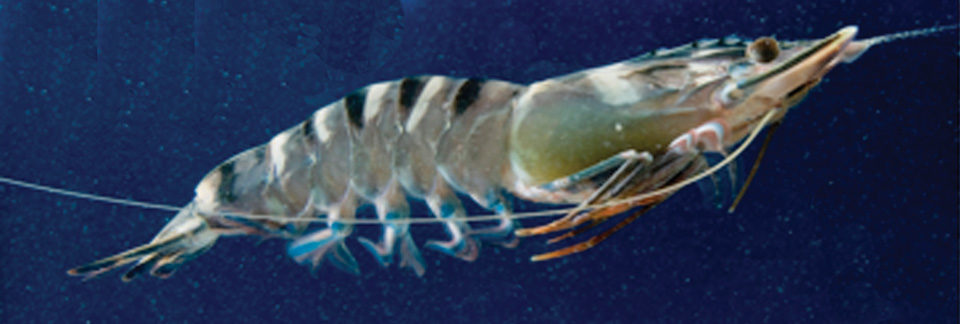
Color and visual appearance are important quality attributes of shrimp that can have a large impact on their market value. Consumers prefer cooked shrimp that have a bright orange color. In some countries, subjective color grading scores are used to provide market segmentation of high-quality shrimp.
Shrimp coloration

The coloration of shrimp is caused by the presence of colored pigments in the external tissues of the shrimp that play an important role in camouflage for survival. The pigments result mainly from the ingestion of dietary carotenoids present in microalgae and phytoplankton.
In live and uncooked shrimp, these pigments are largely protein bound and have a blue-green appearance. Although some of the pigments can be metabolized in the shrimp to other carotenoid forms and provide a source of vitamin A, they cannot be synthesized. So shrimp, like all animals, are dependent on a dietary source of these pigments.
Astaxanthin is by far the major carotenoid found in shrimp tissues, although small amounts of beta-carotene, lutein and others are sometimes present. The astaxanthin is present in either a free form or esterified with one or two fatty acids (mono- and diester), but there is presently little understanding of the roles these forms play in the shrimp. It is known that astaxanthin is involved in increased stress tolerance and various developmental and differentiation processes in the live shrimp.
For farmed shrimp, appropriate coloration is generally achieved by increasing the amount of synthetic astaxanthin in the commercial pellet feeds. This can be an expensive process that requires careful adjustment of pigment levels at critical stages of growth together with consideration of the amount of algal biota in the ponds. However, even with supplementation of high amounts of astaxanthin, large variations in cooked shrimp color are commonly observed.
Study: background color, pigmentation
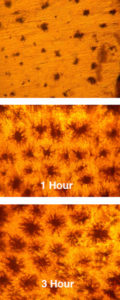
As part of the Commonwealth Scientific and Industrial Research Organisation’s Food Futures Flagship initiative to improve shrimp coloration and market value, the authors measured the total astaxanthin content in black tiger shrimp and found large differences in cooked color even when they contained similar levels of astaxanthin. Given previous findings relating to the ability of shrimp to transport pigments within their chromatophores and/or to other internal locations such as the digestive gland, the authors investigated the effects this has on the cooked appearance of shrimp.
Initially, black tiger shrimp (Penaeus monodon) were grown in black-lined tanks in a darkened laboratory and fed a basic commercial feed containing 40 mg astaxanthin per kg feed. After several weeks, the shrimp were separated into two groups. One group was transferred to a white-lined tank and the other to a black-lined tank of similar dimensions.
The light intensity at the surface of the water in each tank was about 10 lux. The water and feeding conditions were the same for each group. At four weeks, the shrimp were removed from their tanks and placed into a slurry of ice until they expired.
At this point, the overall color of each group was different, and when they were subsequently cooked in boiling water, the shrimp from the black-lined tank had a deeper orange-red coloration. However, the mean astaxanthin content – about 30 µg per gram – in each group of shrimp was not different. Moving the shrimp to an environment with a lighter background color resulted in a shift of pigments to anatomical locations that were less evident, resulting in shrimp with lighter coloration.
The authors also observed that the relative distribution of astaxanthin and its esters changed. In the darker-colored shrimp, the non-esterified astaxanthin made up more than 50 percent of the total pigments with mono- and diester accounting equally for the remainder. However, for lighter-colored shrimp from the white tanks, the distribution of the astaxanthin fractions was very different. In this case, the non-esterified astaxanthin was reduced to about 10 percent, while the monoester form increased to about 65 percent with little change in the diester.
Color shift
To see how quickly these pigment changes occurred, the authors followed changes in the period immediately after the change in background color. For this work, they again separated shrimp into black- and white-lined tanks, where they grew for four weeks. Once more, the shrimp were maintained on 40 mg astaxanthin per kg feed under identical conditions. However, the shrimp were then transferred from their original tanks into tanks lined with the opposite color. At various times, shrimp were removed and cooked for color assessment and pigment determination.
Again, on removal from the tanks, the shrimp from the black-lined tank were darker than those from the white tank. However, the shrimp from the white tank became darker within a few minutes, and after one hour achieved a significant improvement in color when cooked. For shrimp left longer in the black tank, the color continued to improve over the next few hours (Fig. 1).
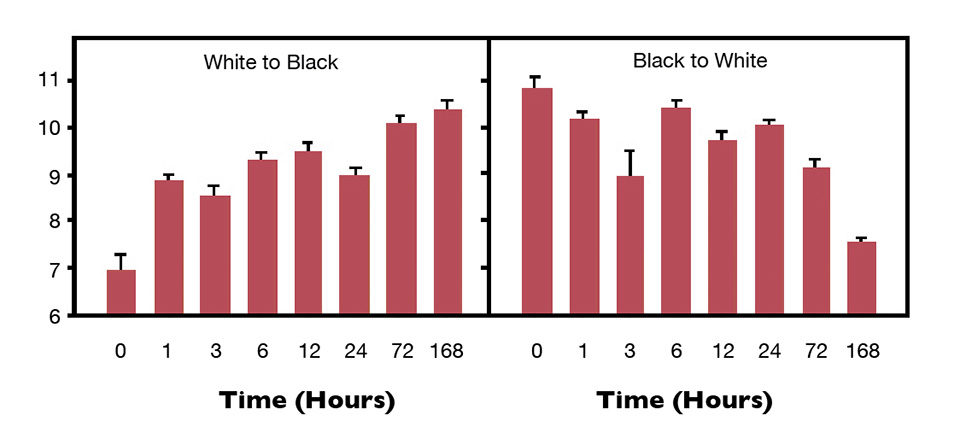
For those shrimp transferred from the black to the white tank, the shrimp became less colored, but the change was slower than that in the opposite direction. Importantly, there was no change in the total astaxanthin content of the shrimp, suggesting that the pigment is transported within the shrimp.
Microscopic investigation of the shrimp’s epidermal layer containing the chromatophores clearly indicated the events occurring during the transition from one background color to another. Shrimp taken from white background tanks showed small, densely pigmented chromatophores, which on exposure to a black background showed a time-dependent dispersion of pigment throughout the stellate-shaped chromatophores. Such dispersion of astaxanthin resulted in the overall appearance of a more-pigmented shrimp.
This study indicated that a simple way to add value to a shrimp crop is to hold the shrimp in a dark-colored tank or other environment for up to one hour prior to processing.
Editor’s Note: This article was based on “Effect of background colour on the distribution of astaxanthin in black tiger prawn (Penaeus monodon): effective method for improvement of cooked colour,” an article by the authors recently published in Aquaculture.
(Editor’s Note: This article was originally published in the September/October 2009 print edition of the Global Aquaculture Advocate.)
Now that you've reached the end of the article ...
… please consider supporting GSA’s mission to advance responsible seafood practices through education, advocacy and third-party assurances. The Advocate aims to document the evolution of responsible seafood practices and share the expansive knowledge of our vast network of contributors.
By becoming a Global Seafood Alliance member, you’re ensuring that all of the pre-competitive work we do through member benefits, resources and events can continue. Individual membership costs just $50 a year.
Not a GSA member? Join us.
Authors
-
Ron Tume, Ph.D.
CSIRO Food Futures Flagship
CSIRO Food and Nutritional Sciences
Creek and Wynnum Roads
Cannon Hill, Queensland 4170 Australia[117,100,101,46,111,114,105,115,99,64,101,109,117,116,46,110,111,114]
-
Anita Sikes, B.S.
CSIRO Food Futures Flagship
CSIRO Food and Nutritional Sciences
Creek and Wynnum Roads
Cannon Hill, Queensland 4170 Australia -
Simon Tabrett, B.S.
CSIRO Food Futures Flagship
CSIRO Food and Nutritional Sciences
Creek and Wynnum Roads
Cannon Hill, Queensland 4170 Australia -
David Smith, B.S.
CSIRO Food Futures Flagship
CSIRO Marine and Atmospheric Research
Cleveland, Queensland, Australia -
Melony Sellars, Ph.D.
CSIRO Food Futures Flagship
CSIRO Marine and Atmospheric Research
Cleveland, Queensland, Australia
Related Posts

Health & Welfare
A comprehensive look at the Proficiency Test for farmed shrimp
The University of Arizona Aquaculture Pathology Laboratory has carried out the Proficiency Test (PT) since 2005, with 300-plus diagnostic laboratories participating while improving their capabilities in the diagnosis of several shrimp pathogens.
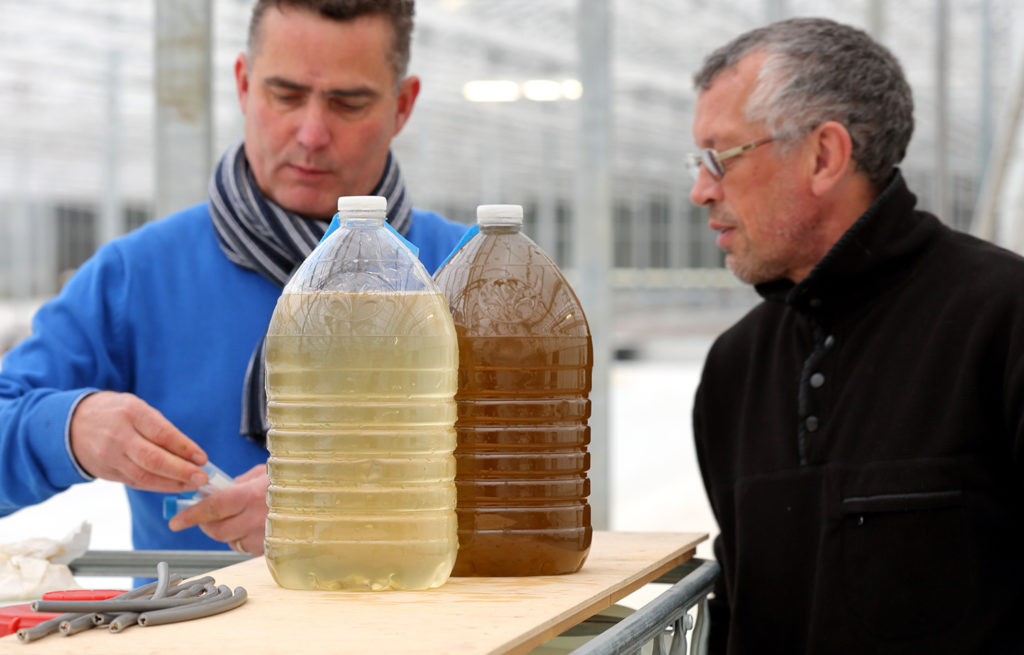
Innovation & Investment
Algae innovators aim to freeze out early-stage shrimp losses
A greenhouse in Belgium believes its innovative shrimp feed product, made from freeze-dried microalgae, packs the necessary nutrients for the crustacean’s most vulnerable life stage: the first three days of its life.
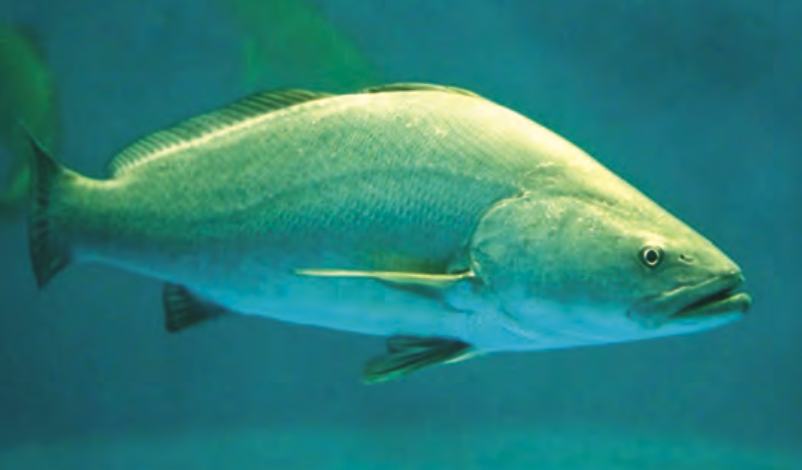
Responsibility
Aquaculture gives endangered totoaba a fighting chance
The tenuous fate of a pint-sized porpoise, the critically endangered vaquita, is linked to a fish targeted by poachers fueling China’s appetite for maws. The vaquita remains in peril, but aquaculture presents some hope for the totoaba.

Health & Welfare
Aquamimicry: A revolutionary concept for shrimp farming
Aquamimicry simulates natural, estuarine production conditions by creating zooplankton blooms as supplemental nutrition to the cultured shrimp, and beneficial bacteria to maintain water quality. Better-quality shrimp can be produced at lower cost and in a more sustainable manner.



